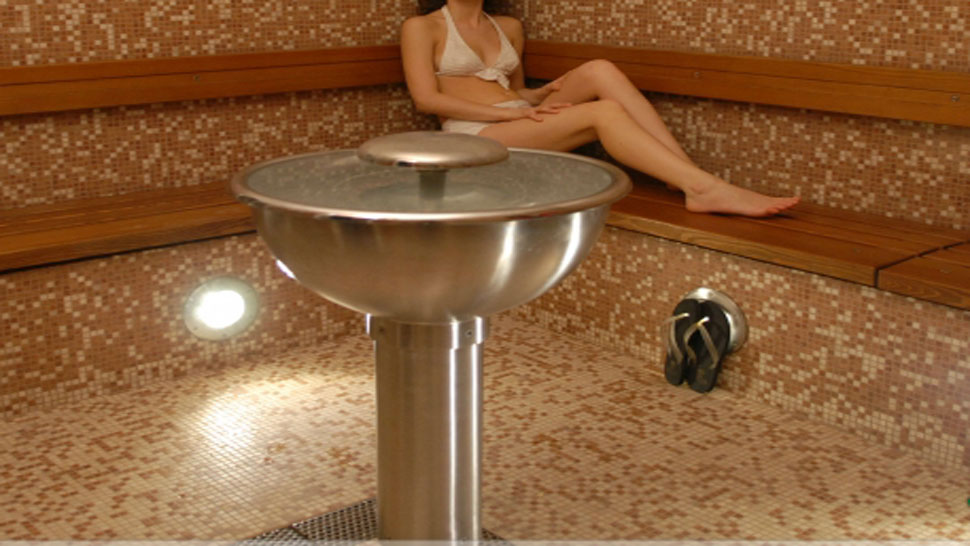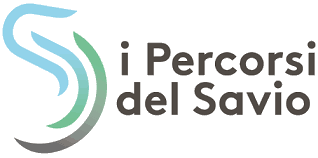
Come si accede alle cure termali
The Health System reform provides that all citizens are allowed to undergo a 12-days hydrotherapy treatment in the spa town they prefer and the National Health System will cover the expenses. Everybody, except for those who are exempt, has to pay a charge of about € 55.00 to the spa. This right to be admitted to hydrotherapy treatments is included in the compulsory medical check-up.
The three spas at Bagno di Romagna operate within the National Health Service and other institutions.
A simple medical prescription is enough to be admitted to hydrotherapy. This prescription must contain the diagnosis of one of the pathologies treated with hydrotherapy (as provided for by the Ministerial decree 15/12/1994), and indicate the necessary treatment. That is:
- Osteoarthrosis; Extra-articular rheumatism: A cycle of 12 mud baths + 12 therapeutic baths;
- Osteoarthrosis; Extra-articular rheumatism: 12 baths cycle;
- Bronchial Rhinosinusitis syndrome: 12 caves cycle;
- Bronchial Rhinosinusitis syndrome; Vasomotor rhynopathy; chronic pharyngitis and laryngitis; ; chronic sinusitis: 24 inhalations cycle (twice a day);
- Chronic bronchitis with or without obstruction (except for asthma and emphysema complicated by respiratory insufficiency and cardiopathies): 24 inhalations cycle (twice a day);
- Chronic bronchitis with or without obstruction (except for asthma and emphysema complicated by respiratory insufficiency and cardiopathies); Integrated treatment cycle of controlled pulmonary ventilation (24 treatments: twice a day):
- Auditory tube stenosis Rhinogenous deafness treatment cycle (24 applications: twice a day);
- Involutive or cicatricial painful sclerosis of the pelvis connective tissue; persistent leucorrhoea caused by aspecific or dystrophic chronic vaginitis: 12 vaginal irrigations cycle;
- Involutive or cicatricial painful sclerosis of the pelvis connective tissue; persistent leucorrhoea caused by aspecific or dystrophic chronic vaginitis: 12 vaginal irrigations cycle with bath;
- Chronic flebopathy consequences Peripheral vascular disease treatment cycle (12 applications);
- Gastro enteric or biliar dyspepsia; intestinal irritation syndrome with costiveness: 12 water cures cycle.
The categories of patients indicated by art.57 of the Italian law 833/78 are entitled to another specific treatment cycle during the year. The patients living in Emilia-Romagna can obtain an authorization to physiotherapy (ultrasound, ionophoresis, hydrokinesitherapy in the swimming pool, in-water exercises, motor re-education….) written by their doctor with the physiatrist permission and the stamp of their Local Health service authority.
______________________________________________________________________________________________________________
Some institutions like INPS (National institute of Personal Insurance) and INAIL (National Board for the insurance against Accidents in Industrial Work) can manage by themselves the access to hydrotherapy. In particular:
- a patient registered at INPS who has already paid for two years the national insurance contributions and has a rheumatic or respiratory pathology can ask for a specific treatment within 31st of October of the previous year by filling in a form available at the main trade-union organizations. Then, in the following months, the patient will undergo a medical examination at the INPS office he is registered in to obtain the authorization.
- the patient registered at INAIL suffering from a respiratory occupational disease due to air-polluting substances or suffering from an infirmity caused by a professional accident, can apply for hydrotherapy to the INAIL service he belongs to.
______________________________________________________________________________________________________________
When the patients arrive at Bagno di Romagna, they must inquire at the "reception" of the spa they have chosen and show their doctor's prescription containing the pathology diagnosis and the necessary corresponding treatments. It is not necessary to lodge at the hotel annexed to the spa to have free access to the watering place.
The patients are immediately led to the outpatients' department inside each spa, where a doctor, expert on hydrotherapy and belonging to the Medical Direction, will carefully examine them. The patients are invited to bring with them medical reports, analysis, ECG, recent X-rays which can help the doctor to evaluate the different pathologies, indicate possible contraindications or the necessity for other examinations or integrative treatments, and to choose the best treatment, its scheduling and the methods applied.
After the medical examination, the patients must go back to the reception to pay the medical charge and other subsidiary treatments and to plan the therapy for the following 12 days. Each patient is given a magnetic badge necessary for collecting the tickets that give access to the treatments in the departments inside the spa
Treatments can begin any day of the week and are constantly controlled by the medical staff. At the end of the therapy, the "reception" checks the magnetic badge and issues a document certifying that the treatment has been done.

Indicazioni terapeutiche delle acque termali di Bagno di Romagna
Hydrotherapy is based on the therapeutic power of the thermal waters in the treatment of various diseases.
Various kinds of water flow from the springs at Bagno di Romagna:
- bicarbonate-alkaline-sulphurous, mineral, hyperthermal (45°C ) and thermal (39°C);
- sulphurous-bicarbonate-alkaline, low in mineral content, cold (14°C), which, thanks to their characteristics are particularly appropriate in the treatment of:
Locomotor apparatus pathologies
- osteoarthrosis and other degenerative forms (primary and secondary - osteoarthrosis, intervertebral disc degenerations with or without ischias syndrome);
- extra-articular rheumatisms (periarthritis, epicondylitis, paratendinitis);
- quiescent inflammatory rheumatisms (rheumatoid arthritis, psoriatic arthritis, spondyloarthritis)
- osteoporosis.
Suggested treatments: therapeutic mud bath; treatments in the caves; bath; hydromassage; hydrokinasitherapy in a thermal swimming pool; massotherapy; physical and rehabilitative treatments.
Ear pathologies
- chronic otitis with effusion
- chronic exudative otitis
- auditory tube stenosis with or without adenoidism
Suggested treatments: micronized nasal douches, nasal irrigations; vapour jet inhalations; flowing thermal water aerosol; sonic aerosol; tubotympanic insufflations; crenotherapic politzer.
Ear and throat pathologies
- Vasomotor rhinopathy
- chronic pharyngolaryingitis
- chronic sinusitis
- chronic bronchial rhino-sinusitic syndromes.
Suggested treatments: micronized nasal douches; nasal irrigations; vapour jet inhalations; flowing thermal water aerosol; sonic aerosol; nebulizations.
Bronchial pathologies
- chronic bronchitis
- pneumoconiosis (occupational diseases due to air-polluting substances).
Suggested treatments: inhalations; flowing thermal water aerosol; ionic aerosol; nebulizations; pulmonary ventilations with intermittent positive pressure; respiratory exercises.
Blood vessels pathologies
- lower limbs obliterative arteriopathies (1st and 2nd stage)
- chronic phlebopathy consequences (varix, post phlebitis syndromes, chronic venous insufficiency, lymphedema).
Suggested treatments: hydromassages; underwater massages; vascular treatments; vascular exercises; pressotherapy; manual lymphodrainage.
Chronic inflammatory pathologies of the gynaecological apparatus
- sclerosis of the connective tissue of the pelvis;
- leucorrhoea caused by chronic vaginitis.
Suggested treatments: vaginal irrigations; vaginal irrigations with therapeutic bath, abdominal mud baths.
____________________________________________________________________________________________________________
THERMAL TREATMENT
Thermal waters are used for inhalations, balneotherapy, in mud maturation, in the caves, in water cure.
Inhalations
The inhalation therapy consists in applying the substances container in the thermal waters to the patient's respiratory tract, by using various techniques to introduce into the upper respiratory passages and the respiratory system both nebulized thermal water and the gases it contains.
- DIRECT JET INHALATION: The patient inhales a jet of thermal vapour sent out by a specific device at a temperature of about 38-40°: in this way, water particles, of about 100 micron, reach the upper respiratory tract.
- FLOWING THERMAL WATER AEROSOL: The patient inhales, through his nose with a fork-shaped device or through his mouth with a special mask, very fine drops of thermal water, fractionated by compressed air in a glass ampoule: in this way, the small particles (2-3 micron) reach the deepest areas of the respiratory system.
In the sonic aerosol a soft rubber mask is placed around the patient's nose and the aerosol particles are subjected to vibrations produced by 100-Hertz sound waves in order to help their penetration into the paranasal sinus, the middle ear and the laryngeal recess.
The ionised aerosol consists in the use of a special device that prevents the aerosol particles from agglomerating by a negative charge and in this way permits them to reach the deepest parts of the respiratory system.
- HUMAGE: It is carried out in a common room or individually. It enables the penetration of sulphur in the form of gas in all the respiratory system.
- NEBULIZATION: It is performed in a common room and consists in the inhalation of thermal water active particles, measuring about 50 micron.
- INSUFFLATION: it is based on the humage principle, performed with a special catheter introduced by the doctor into the nostril and leading gas rich in hydrogen sulphide to the middle ear
- POLITZER: it is a variant of the insufflation, used especially with children. Instead of a catheter a glass device is used to close hermetically a nostril: with many repeated deglutitions, the gas easily gets to the middle ear.
- NASAL IRRlGATION: the thermal water gets directly to the nasal mucous membrane to deterge and reduce its inflammation.
- MICRONIZED NASAL DOUCHE: it is a variant of the nasal irrigation. By means of a special ampoule, large water particles reach the nasal mucous membrane.
Mud bath treatment
Mud bath treatment consists in putting on the sore part of the body a mud made of a mixture of thermal water and clay. This mud is obtained by putting natural and very fine virgin clay for at least 12 months in special tubs where it is regularly blended with the thermal water that constantly flows through the tubs in order to enable the mud to get to the right maturation level.
During this long time, the clay undergoes remarkable modifications enriched by the minerals container in the hyperthermal water where it macerates and by the development of a particular microflora (algae, moulds, bacteria and small protozoans). In this way the mud gets to the right "maturation" level and is then heated in a bain-marie at 51° c. and is ready to be used.
Only the "mature" mud has analgesic and anti-inflammatory powers because it acts locally on the muscles and also generally on the adaptive capacity by sending out hydrocortisone (the cortisone produced by our own body), ACTH (a hormone that causes a rise in hydrocortisone production) and Beta-endorphins (morphine produced by our body in stress situations).
This warm mud is applied to the parts of the body affected by rheumatisms and its temperature is kept constant by the application of warm sheets and blankets. After this 20-minutes phase of thermo-absorption, the patient has to take a bath in thermal water in order to remove the mud and enhance the rehabilitative effect.
Afterwards, in a small room nearby, the patient undergoes a phase of thermo-dispersion characterized by a heavy sweating.
Balneotherapy
It is the thermal treatment par excellence and consists in dipping, partially or completely, the body in thermal water in order to profit by its temperature, the hydrostatic pressure and its chemical and physical components.
There are many different kinds of balneotherapy: therapeutic bath, hydromassage bath, ozone bath, bath in the swimming pool, underwater massage. The doctor depending on the patient's disease and conditions chooses the type of bath, its length, the method applied and the water temperature.
Balneotherapy usually takes place in individual tubs, while the rehabilitative techniques are applied in the swimming pool or in special tubs.
The thermal swimming pool
In each of the spas there is a thermal swimming pool with hydromassage jets on the walls. So, unlike the thermal bath, the patient is not still but does exercises, special movements (kinesitherapy), individual or collective gymnastic exercises, with the help of rehabilitation therapist.
The Cave
It is the most typical and ancient kind of hydrotherapy. The thermal water comes directly from the spring and flows along the walls of the cave, filling the cave with vapour (75%-100%).
The patients sweat heavily and inhale the active principles container in the water (sulphur, bicarbonate, carbon dioxide, inert gases). By sweating heavily, the patient eliminates a lot of water and metabolic scoriae, detoxicating his body and stimulating the neurovegetative system and the metabolism.
The thermal stress in the cave leads to the emission of anti-inflammatory substances that are very effective on the treatment of rheumatisms, and causes a rise in the uric acid discharge and decrease of glycaemia, as well as balancing some metabolic parameters as cholesterol and tryglicerides.
The cave method is used to treat muscular rheumatic pathologies, like the fibromialgic syndrome, as well as physical or psychological stress.
The water cure
It consists in drinking a specific quantity of mineral and/or thermal water following the specialist's prescriptions about the water temperature and quantity, and the timetable to be respected. At the Thermal Hall of Terme Santa Agnese at Bagno di Romagna, you can drink both bicarbonate- alkaline-sulphurous water and sulphurous-bicarbonate water, used for the prevention and treatment of the gastro-enteric system (gastro-oesophageal reflux, dyspepsia with delayed gastric evacuation).











 Facebook
Facebook Instagram
Instagram Youtube
Youtube